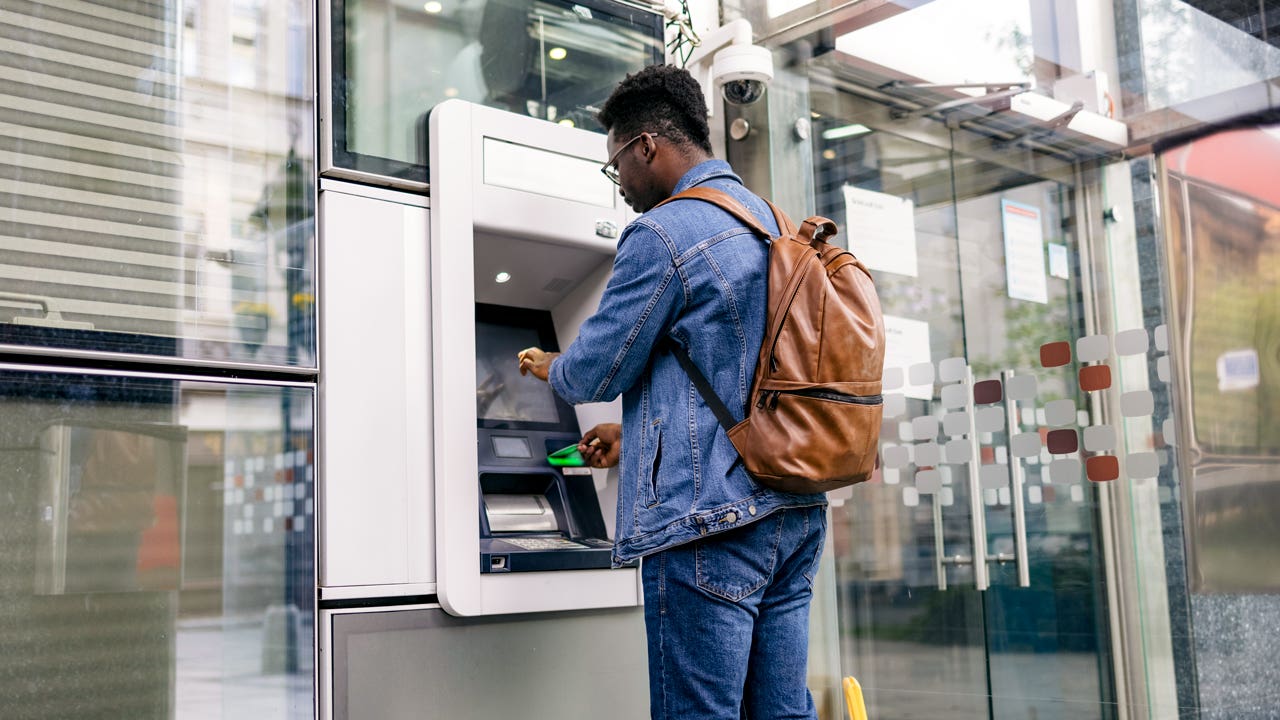8 banks that reimburse ATM fees




ATM fees are among the most commonly charged banking fees — and they’ve hit a record high. The average total ATM fees are $4.77, according to Bankrate’s 2024 checking account and ATM fee study. Fortunately, many banks and credit unions are making it possible for customers to take out cash without having to pay for it.
Reimbursing out-of-network ATM fees is another way that some financial institutions are breaking out of the traditional banking model. Many have already eliminated overdraft fees and monthly maintenance fees. Banks and credit unions that reimburse some, or all, ATM fees are taking another step toward making everyday transactions less costly for consumers.
Here are eight banks and credit unions in the U.S. that pay you back for out-of-network ATM fees.
Alliant Credit Union
Alliant Credit Union offers up to $20 a month in ATM fee rebates when you use the Alliant Visa debit card. The rebate is deposited into your checking account at the end of each day that you’re charged ATM fees, excluding foreign transaction fees.
Ally Bank
One of the top-rated banks according to Bankrate’s bank reviews, Ally Bank is known for charging very few fees on its accounts. It has no overdraft fees, incoming wire fees or maintenance fees, and it reimburses up to $10 a month in out-of-network ATM fees.
Axos Bank
Axos Bank offers unlimited domestic ATM fee reimbursements for the Essential Checking (its standard checking account), Rewards Checking and Cashback Checking accounts. On the Golden Checking account, which is designed for customers ages 55 and over, up to $8 in ATM fees can be reimbursed each month.
Charles Schwab Bank
With a Charles Schwab High Yield Investor Checking account, customers receive unlimited ATM fee rebates. All ATM fee reimbursements each month appear as a lump sum at the end of the month. While you may be charged a conversion fee when banking internationally, Charles Schwab also doesn’t charge foreign transaction fees.
LendingClub
At LendingClub, customers with either a Rewards Checking or Tailored Business Checking account receive unlimited ATM fee reimbursements. The reimbursements are deposited into your account at the end of each statement cycle.
Navy Federal Credit Union
Navy Federal Credit Union offers up to $10 in ATM fee rebates per statement cycle for its Free Easy Checking account. To be eligible for the account, members must either set up direct deposit or make at least 20 transactions each month, or the account will be converted to one that does not reimburse ATM fees at a specific point. To join Navy Federal Credit Union, you’ll also need to be a member of the military or have a household connection to someone who is.
TD Bank
With TD Bank’s Beyond Checking account, customers can get unlimited out-of-network ATM fee reimbursements. However, a minimum balance of $2,500 in the account is required to qualify for ATM fee reimbursements.
EverBank
Formerly known as TIAA Bank, EverBank checking accounts that don’t have minimum balance requirements offer up to $15 in ATM fee rebates each month. Accounts that require a minimum average daily balance of $5,000 provide unlimited reimbursement of ATM fees.
What Americans pay in ATM fees
ATM fees are at a record high. According to Bankrate’s latest checking account survey, Americans, on average, pay $4.77 per out-of-network ATM transaction.
The total out-of-network ATM charge usually includes two fees: an out-of-network fee from your bank and a surcharge from the ATM owner. The average out-of-network fee among banks that charge it is $1.58. While many banks don’t charge this fee, customers still have to pay the ATM owner’s surcharge, which is $3.15 on average.
How to avoid ATM fees
Besides switching to an account that reimburses ATM fees, there are several ways you can avoid these ATM charges:
- Get cash back when you check out at a grocery store or other retailer.
- Take out larger sums of cash in a single ATM visit, so that you aren’t incurring multiple fees for smaller withdrawals.
-
Stick to in-network ATMs. Most banks, even online banks, are partnered with a large network of ATMs. You can usually find an ATM directory either on the bank’s website or mobile app to see in-network ATMs near you.
What to keep in mind about ATM fees
If you frequently use ATMs, factoring in ATM fees when selecting a bank is a good idea. When considering a bank, find out what their ATM network is like. Ally Bank, for example, offers 75,000 fee-free ATMs.
Consider branch access. If you need to get cash, you can also visit branches to make a withdrawal. Understand not only how many branches your bank has but also where they are located.
While ATM fees are an important consideration when choosing the best checking account for you, don’t forget other vital things. You want to have a bank that is FDIC-insured with high reviews. You’ll also want to consider monthly maintenance fees and what is required to waive it, any other fees and other features, such as whether or not mobile deposit and early pay is available.
Bottom line
The frustration of paying an extra charge for withdrawing your own money is one that many banks and credit unions have started to address by reimbursing out-of-network ATM charges. The requirements to be eligible for these reimbursements vary from bank to bank, so make sure to check with your financial institution’s disclosures to see if you’re eligible.




